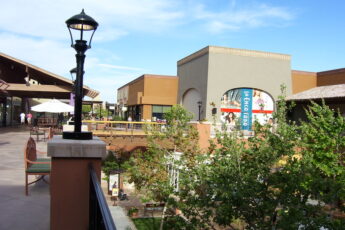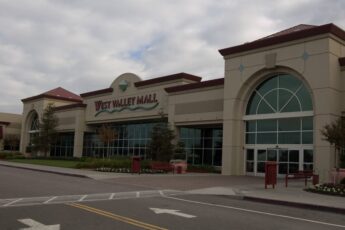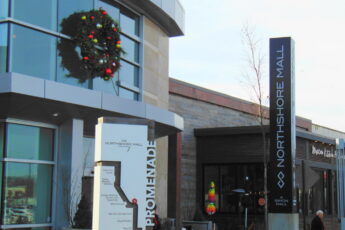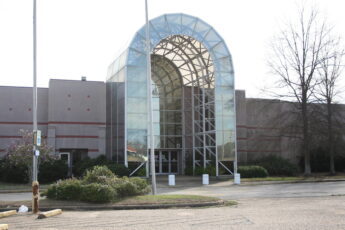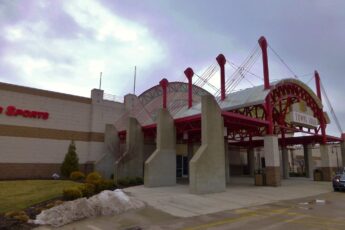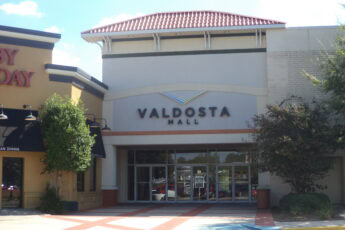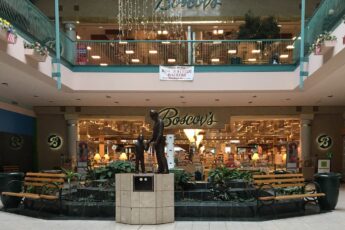The Birth of Harundale Mall (1958)
Harundale Mall opened on October 1, 1958, in Glen Burnie, Maryland. Community Research & Development Inc., led by James W. Rouse, developed the mall. It was the first enclosed, air-conditioned shopping mall east of the Mississippi River. The architectural firm Rogers, Taliaferro, & Lamb designed the mall, which covered 350,000 square feet of retail space.
The mall featured six stores initially on the property before expansion. The new structure added a "Garden Court" with Mynah birds and a large fountain. Hochschild, Brager's, Kohn & Co., S.S. Kresge, Oppenheim Collins, G.C. Murphy, and Food Fair became the major tenants. These stores, representing various sectors of retail, from department stores to grocery and variety stores, formed the mall's commercial backbone.
The grand opening included ceremonies with Governor Theodore McKeldin and Senator John F. Kennedy, underscoring the mall's impact on local trade. The event attracted large crowds eager to experience the new shopping environment.
Harundale Mall's design and commercial offerings set it apart from other retail centers of its time, making it a model for future developments. The success of the mall influenced commercial real estate in Glen Burnie and surrounding areas, contributing to the local economy's growth.
Things to do in Glen Burnie, Maryland, expanded significantly with the mall's opening, as it provided a central location for shopping and social activities. This initial success laid the groundwork for future expansions and developments within the region's retail sector.
Expansion and Early Challenges (1960s-1970s)
In 1964, Harundale Mall expanded its offerings by adding a single-screen theater operated by General Cinemas. This move increased foot traffic and added an entertainment option for shoppers. The theater became a popular spot, further integrating the mall into the community's daily life.
In 1959, Brager's merged with Gutman's, rebranding as Brager-Gutman's. This merger marked one of the first major changes in the mall's lineup.
Retailers constantly evolved their offerings to keep up with the area's growing demands. Food Fair, a key tenant from the beginning, rebranded to Pantry Pride in 1971, reflecting shifts in the grocery industry.
Despite these positive changes, the mall became connected to two tragic events in the late 1960s and early 1970s. In 1969, Joyce Malecki disappeared after being last seen at the mall. Authorities found her body two days later at a nearby shooting range.
A year later, Pamela Conyers went missing after driving to the mall. They discovered her body four days later near the Waterford Road overpass on Maryland Route 100. These events cast a shadow over the mall during a time when it was otherwise thriving.
By the late 1970s, the mall faced new challenges. Retail competition in the area increased, and the building showed signs of wear. Shoppers began to notice the mall's age, and the once-modern design started to feel dated compared to newer shopping centers.
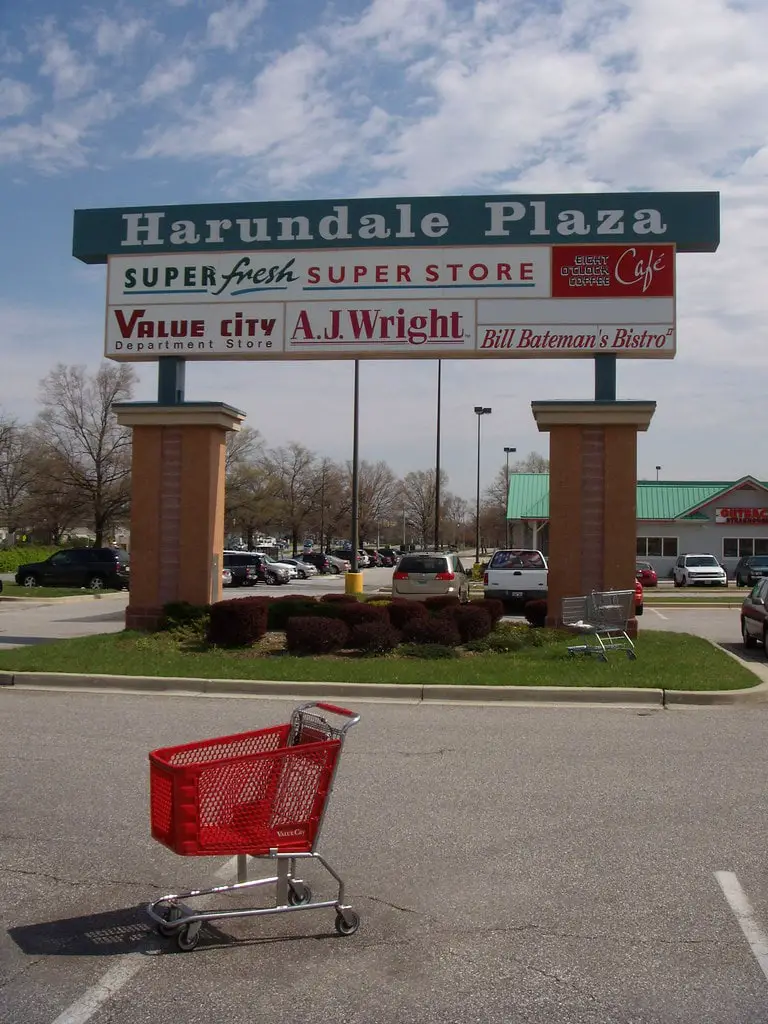
Renovation and Decline (1980s)
In 1980, Harundale Mall underwent its first renovation. Leblang & Associates spearheaded the project, investing $250,000 to update the interior. They installed new tiles, repainted the walls, and added a new picnic area in the south court. Despite these efforts, the mall struggled to regain its former popularity.
Anchor stores also began to change during this decade. In 1984, Hutzler's replaced Hochschild, Kohn & Co. as the main department store.
Hutzler's attempted to modernize the space, but by 1988, they shifted strategies and converted the store into a discount outlet called Hutzler's Value Way. However, this change didn't last long, and the store closed later that year.
Value City moved into the former Hutzler's space in 1989. This marked a shift in the mall's identity as it transitioned from a hub for high-end shopping to a center for discount retail. The change reflected broader trends in the retail industry as shoppers became more price-conscious in response to economic pressures.
Marley Station Mall opened in 1987 in Glen Burnie, just a few miles from Harundale Mall. Its opening introduced new competition to the local retail scene, as Marley Station offered a more modern shopping experience with a larger selection of stores and amenities.
The new mall quickly became a preferred destination for shoppers, drawing business away from Harundale Mall. This shift in consumer preference contributed to Harundale Mall's decline, which was already facing challenges from the evolving retail landscape.
The End of Harundale Mall (1997-1998)
The Rouse Company had put the mall up for sale in 1995, signaling the inevitable. The mall had lost its luster, and its occupancy rate dropped to 80%.
By 1997, Harundale Mall had reached the end of its retail journey. The once-bustling shopping center had lost most of its tenants, and only a couple of stores, including Value City, remained open. The mall's closure in 1997 felt like the closing of a chapter in Glen Burnie's commercial history.
Manekin Corp purchased the property shortly after the mall closed. They announced plans to demolish the aging structure and redevelop it into a strip mall.
This decision marked a clear shift in retail strategy, moving away from the enclosed mall format that had defined the area for decades.
Demolition began in March 1998, and by the end of the year, the old Harundale Mall was gone, replaced by a site ready for new development.
Rebirth as Harundale Plaza (1999)
In 1999, the site of the former Harundale Mall reemerged as Harundale Plaza. This new shopping center offered a modern, open-air strip mall layout that catered to changing retail preferences.
Superfresh and an expanded Value City became the anchor stores, drawing shoppers back to the location. The plaza featured 217,000 square feet of retail space, offering a variety of shopping options in a more accessible format.
New stores and businesses quickly filled the space. Banks like First Union and Crestar, which had previously operated within the mall, negotiated new leases in the plaza.
This continuity of services helped retain the location's relevance in the community. The new layout improved visibility and accessibility, with multiple entry points and better traffic flow along Ritchie Highway.
Over time, the plaza continued to evolve. In 2008, Burlington Coat Factory took over the former Value City space, reflecting the ongoing shifts in retail demand.
AJWright, which had been one of the plaza's original tenants, was converted to HomeGoods in 2011. These changes kept Harundale Plaza relevant in an ever-changing retail landscape.
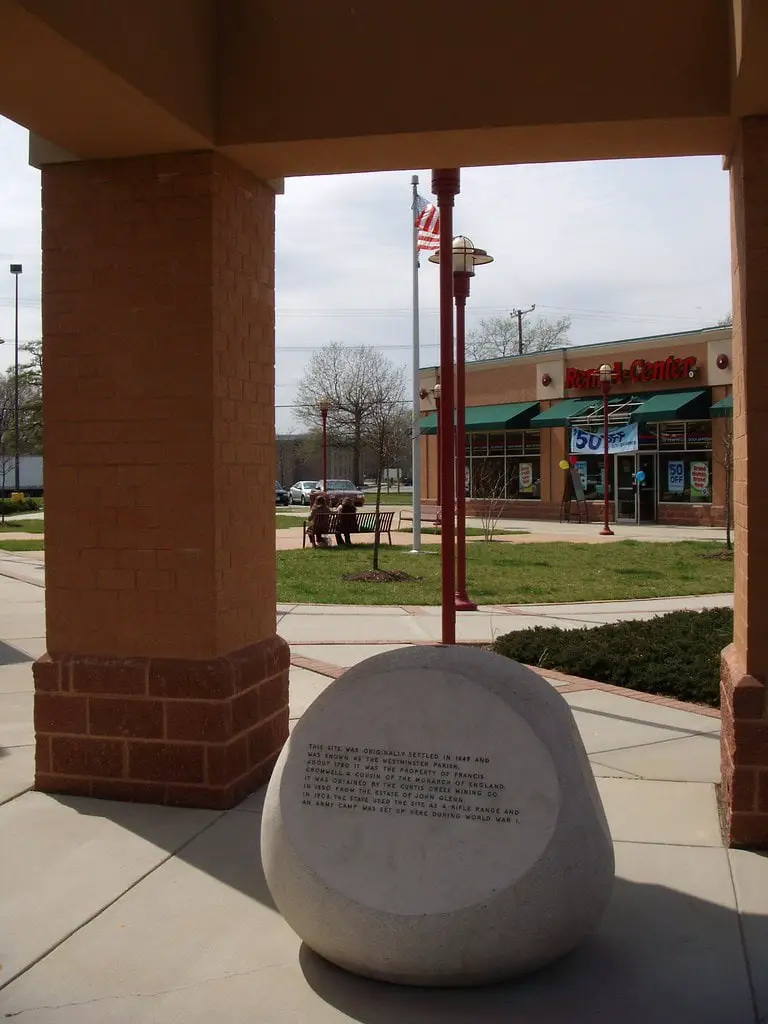
Urban Air Adventure Park Opens in Harundale Plaza (2024)
In 2024, Harundale Plaza welcomed a new addition that has sparked excitement in the Glen Burnie community. Urban Air Adventure Park, a popular chain of indoor adventure parks, opened its doors in the former Value City space within the plaza.
This new attraction offers a variety of family-friendly activities, including climbing walls, laser tag, and the Sky Rider. This indoor zip line provides a thrilling experience for visitors of all ages.
The opening of Urban Air Adventure Park marks a fresh chapter for Harundale Plaza, which has seen numerous transformations over the years.
The park aims to draw in both locals and visitors, revitalizing the plaza as a destination for entertainment and recreation. With its wide range of activities, Urban Air caters to children, teens, and adults alike, making it a versatile addition to the community.
The decision to open Urban Air Adventure Park at Harundale Plaza reflects broader trends in retail and commercial real estate, where experiential destinations are increasingly valued.
This move is expected to boost foot traffic in the plaza, benefit surrounding businesses, and contribute to the local economy. As shopping habits continue to evolve, Harundale Plaza's adaptability to these changes will be crucial in maintaining its relevance.
As of August 2024, Urban Air Adventure Park is fully operational, and the community has responded positively to this new attraction. The park's opening has been met with enthusiasm, and it is expected to become a staple in Glen Burnie's entertainment landscape.

